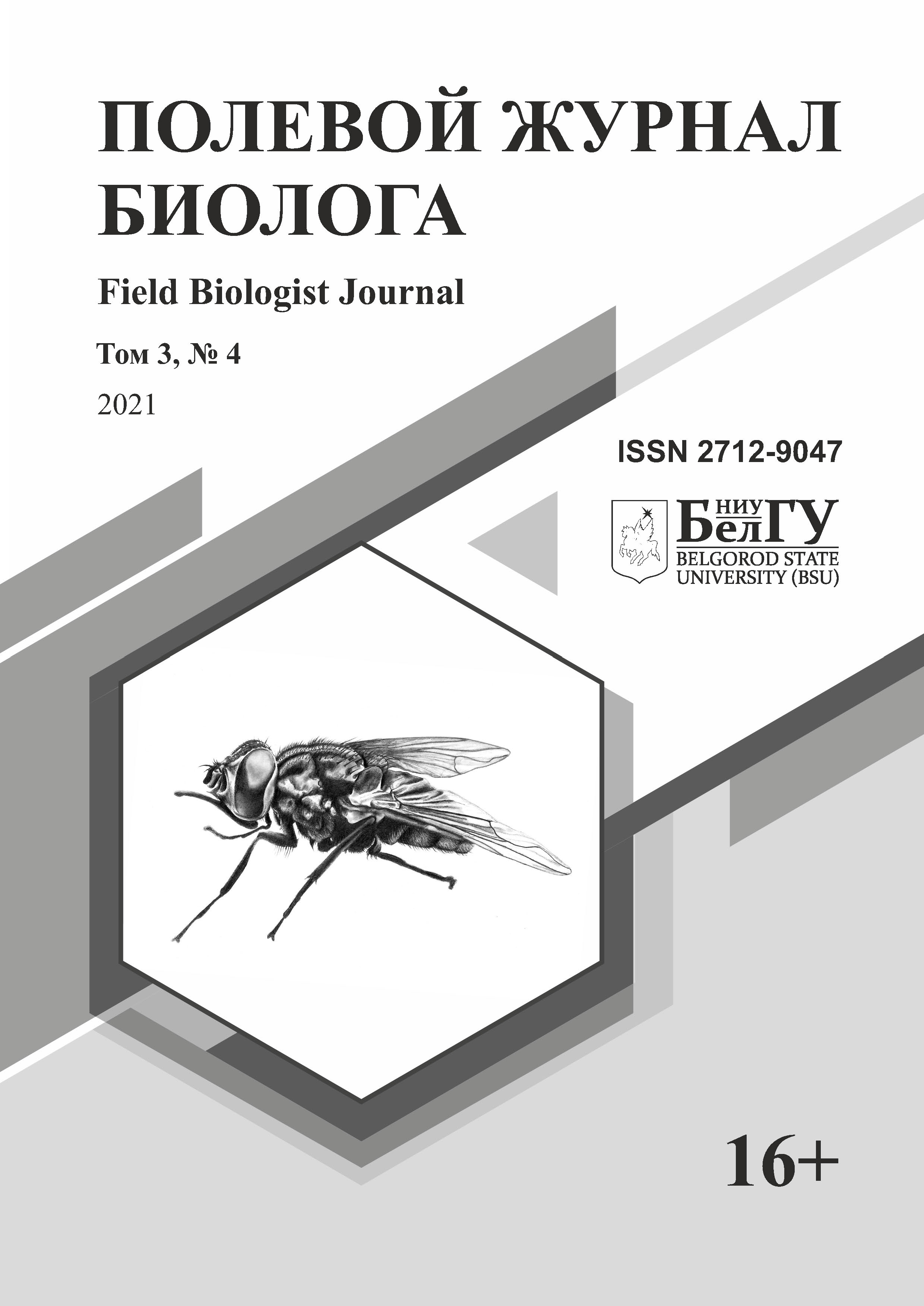Materials on Flora of Mires in Tambov Region, Russia
DOI:
https://doi.org/10.52575/2712-9047-2021-3-4-309-319Keywords:
fen, transitional mire, raised bog, flora of mires, vascular plants, mosses, Red Data BookAbstract
The Tambov region is located in a forest-steppe natural zone, which is characterized by relatively low paludification and a strong transformation of natural landscapes. In the XX century, the mires were subjected to significant anthropogenic impact, which affected the flora, but was practically not recorded in publications of the last three decades. The article presents the results of floristic studies of mires in the Tambov Region conducted in 2011–2021. Surveys were carried out by the route-key method in 13 districts. A list of plants, their distribution by mire types (fen, transitional mire, raised bog) and occurrence rate are given. A total of 158 species of vascular plants (108 genera and 55 families) and 33 species of mosses (14 genera and 9 families) were identified. The most common vascular plants in the mires of the Tambov Region were Salix cinerea, Typha latifolia, Lysimachia vulgaris, Carex acuta, Betula pubescens, L. thyrsiflora, Calamagrostis canescens, Phragmites australis, Lycopus europaeus, from mosses – Sphagnum fallax, S. flexuosum, S. angustifolium. In the studied mires, 22 species listed in the Red Data Book of the Tambov Region were registered.
Acknowledgements
Research was carried out within the framework of the state assignment 121051100099-5.
Downloads
References
Алехин В.В. 1915. Введение во флору Тамбовской губернии. Ботанический очерк. М., 96 с.
Варгот Е.В., Гришуткин О.Г., Хапугин А.А. 2015. Новые и редкие растения Тамбовской области. Бюллетень Московского общества испытателей природы. Отдел биологический, 120 (6): 78–81.
Водно-болотные угодья России. Том 3. Водно-болотные угодья, внесенные в Перспективный список Рамсарской конвенции. 2000. М., Wetlands International. 490 с.
Гришуткин О.Г., Варгот Е.В. 2016. Редкие виды сосудистых растений на выработанных болотах лесостепи средней России. Ботанический журнал, 101 (2): 166–189.
Камышев Н.С. 1967. Водораздельные сфагновые болота Окско-Донской низменности. Бюллетень Московского общества испытателей природы. Отдел биологический, 77 (3): 66–75.
Красная книга Тамбовской области: Мхи, сосудистые растения, грибы, лишайники. 2019. Тамбов, ООО «ТПС», 480 с.
Маевский П.Ф. 2014. Флора средней полосы европейской части России. 11-е изд. М., Товарищество научных изданий КМК, 635 с.
Попова Н.Н. 2017. Распространение, эколого-биологические особенности и состояние охраны мохообразных, рекомендованных во второе издание Красной книги Тамбовской области. Nature Conservation Research. Заповедная наука, 2 (Suppl. 2): 28–42. DOI: 10.24189/ncr.2017.029
Самсель Н.В. 1990. Растительность озера Карамжай (Тамбовская область). Бюллетень Московского общества испытателей природы. Отдел биологический, 95 (5): 136–140.
Хмелев К.Ф. 1972. К стратиграфии и возрасту сфагновых болот средней части Окско-Донской равнины. Бюллетень Московского общества испытателей природы. Отдел геологический, 47 (6): 121–124.
Hodgetts N.G., Söderström L., Blockeel T.L., Caspari S., Ignatov M.S., Konstantinova N.A., Lockhart N., Papp B., Schröck C., Sim-Sim M., Bell D., Bell N.E., Blom H.H., Bruggeman-Nannenga M.A., Brugués M., Enroth J., Flatberg K.I., Garilleti R., Hedenäs L., Holyoak D.T., Hugonnot V., Kariyawasam I., Köckinger H., Kučera J., Lara F., Porley R.D. An annotated checklist of bryophytes of Europe, Macaronesia and Cyprus. Journal of Bryology, 42 (1): 1–116. DOI: 10.1080/03736687.2019.1694329
Sofronova E.V., Bezgodov A.G., Biryukov R.Yu., Boychuk M.A., Braslavskaya T.Yu., Churakova E.Yu., Czernyadjeva I.V., Doroshina G.Ya., Dyachenko A.P., Ermokhina K.A., Fedosov V.E., Grishutkin O.G., Ignatov M.S., Ignatova E.A., Kholod S.S., Kolesnikova M.A., Konstantinova N.A., Kozhin M.N., Kudr E.V., Kuzmina E.Yu., Lavrskiy A.Yu., Morozova L.M., Moseev D.S., Neshataeva V.Yu., Nozhinkov A.E., Obabko R.P., Philippov D.A., Popova N.N., Sergeeva Yu.M., Telyatnikov M.Yu., Troeva E.I., Tubanova D.Ya., Volosnova L.F., Zakharova A.G., Zhalov Kh.Kh., Zolotov D.V. 2019. New bryophyte records. 12. Arctoa, 28 (1): 116–142. DOI: 10.15298/arctoa.28.10
##article.numberofviews## 500
##submission.share##
Published
How to Cite
Issue
Section
Copyright (c) 2021 Олег Геннадьевич Гришуткин

This work is licensed under a Creative Commons Attribution 4.0 International License.



